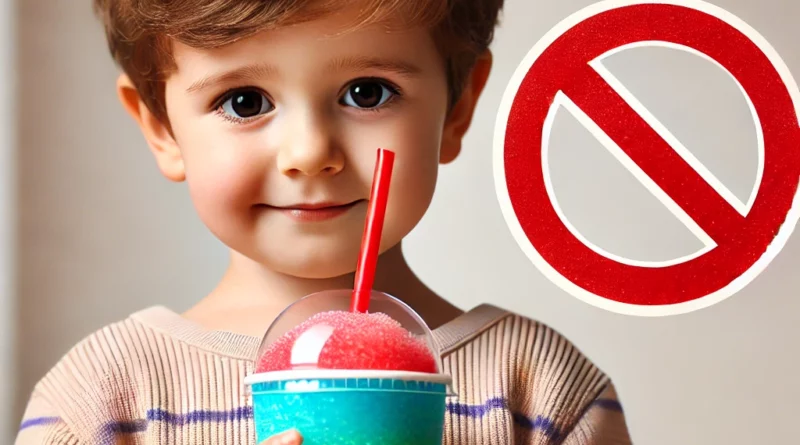“Dietitian Reveals the One Thing She’d Never Let Her Child Eat: Slushies Are Off the Table 🚫”
Paediatric dietitian Emma Shafqat has a relaxed approach when it comes to her daughter Olivia’s diet, allowing her to enjoy a variety of foods, including occasional junk food. However, there is one item Emma absolutely refuses to let her daughter consume: slushie drinks. Emma warns that while she follows the 80/20 rule, where 80% of Olivia’s diet consists of healthy, nutritious foods, and 20% is reserved for treats like pizza, chocolate, and fizzy drinks, slushies are entirely off-limits.
Emma explains her stance on slushies, emphasizing the inclusion of the food additive glycerol (E422) as a major concern. Glycerol, used to maintain the slushie’s consistency and prevent it from freezing solid, can pose serious health risks if consumed in large amounts. High levels of glycerol consumption can lead to nausea, headaches, and in rare cases, more severe symptoms such as hypoglycaemia (low blood sugar) or even shock.
Potential Health Risks of Glycerol
According to experts from the Food Standards Agency (FSA), glycerol is used in a variety of food products, but the concentration in slushie drinks is notably higher. The agency warns that children under the age of four are particularly vulnerable to glycerol intoxication, which can cause symptoms like dizziness, fatigue, confusion, and vomiting. In severe cases, children may experience hypoglycaemia, a condition that causes low blood sugar, which could lead to fainting or even loss of consciousness.
Slushie Drinks Pose a Hidden Danger for Young Children
Emma Shafqat emphasizes that while many parents may not consider slushies dangerous, the high levels of glycerol make them unsuitable for young children. She highlights the importance of awareness among parents, as glycerol intoxication is often underreported. “Parents might not always recognize the symptoms, mistaking nausea or headaches for something else. It’s crucial that we understand the risks, especially for younger kids who have smaller body weights and are more easily affected by high glycerol levels,” says Emma.
Government Guidelines and Manufacturer Responsibility
The FSA has released new guidelines urging manufacturers to minimize the use of glycerol in slushie drinks. While symptoms of glycerol intoxication are generally mild, the agency stresses the importance of reducing the additive’s concentration to prevent potential harm. “We are grateful to manufacturers who have already taken steps to reduce glycerol levels, and we encourage others to follow suit,” says Adam Hardgrave, Head of Additives at the FSA.
Food Standards Scotland (FSS) has also raised concerns after receiving reports of children being hospitalized due to glycerol intoxication. Stephen Hendry, head of standards at FSS, stated, “While the risk of severe symptoms remains low, parents should be aware of the risks associated with high consumption of slushie drinks, particularly in young children.”
Recommendations for Parents
Emma Shafqat advises parents to let their children enjoy treats in moderation but to be mindful of the hidden dangers that some foods and drinks might present. She suggests opting for healthier alternatives like fruit-based ice pops or homemade smoothies, which are free from potentially harmful additives like glycerol.
“Children should be allowed to indulge in their favorite treats occasionally, but it’s up to us as parents to make informed decisions about what we allow them to consume,” says Emma.
Conclusion
While slushie drinks might seem like a harmless treat, experts like Emma Shafqat and organizations such as the FSA and FSS caution against their frequent consumption, especially for young children. With potential health risks such as nausea, headaches, and even hypoglycaemia associated with glycerol, it’s important for parents to remain vigilant and prioritize their children’s health and safety when choosing foods and drinks.

